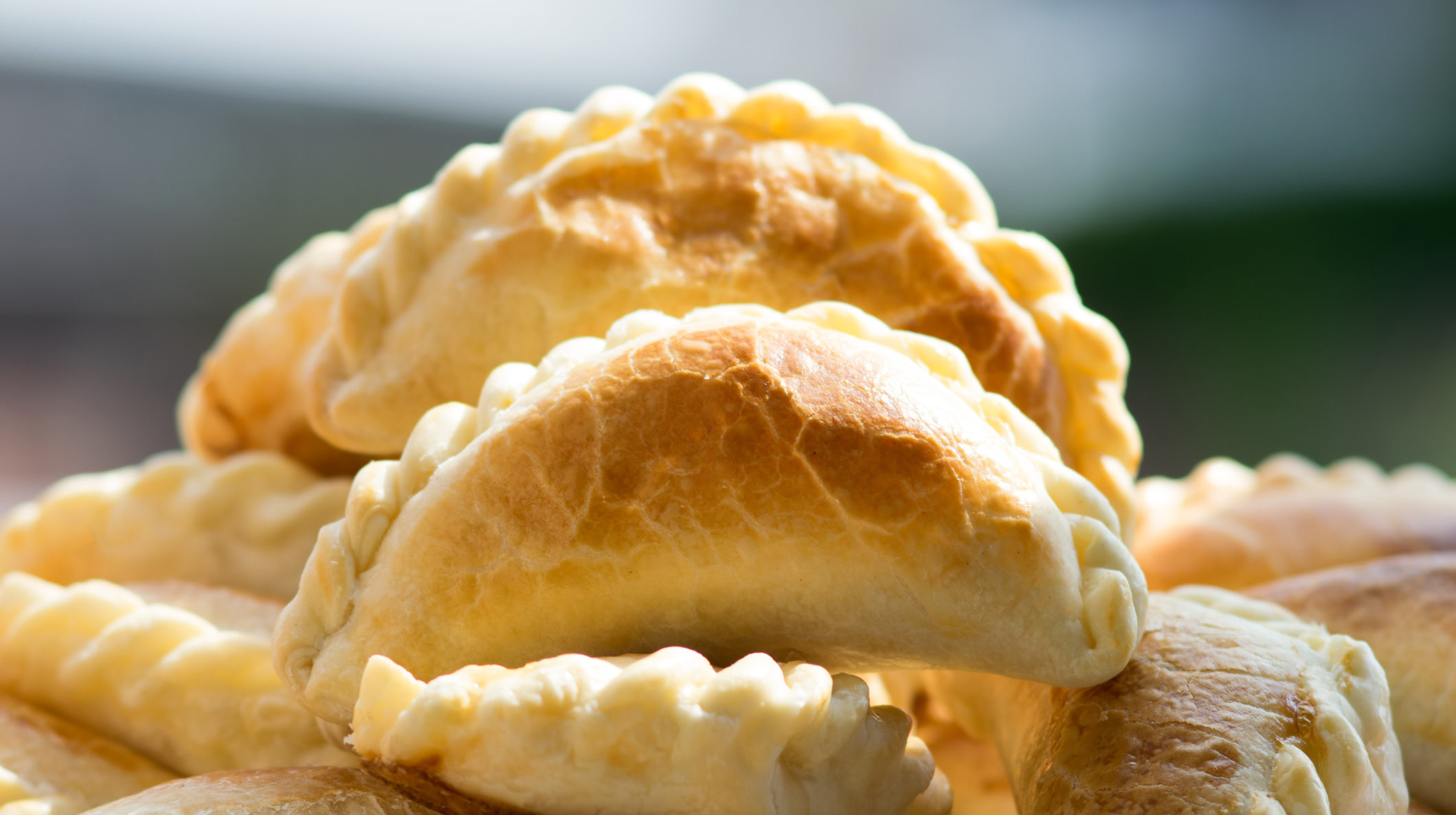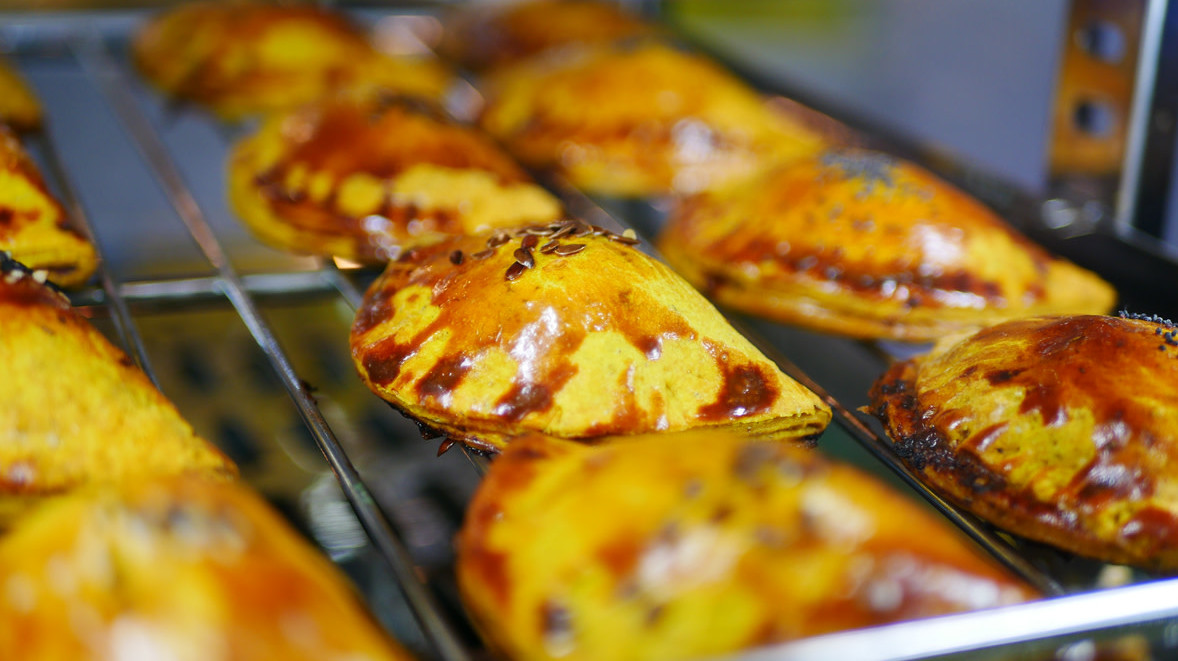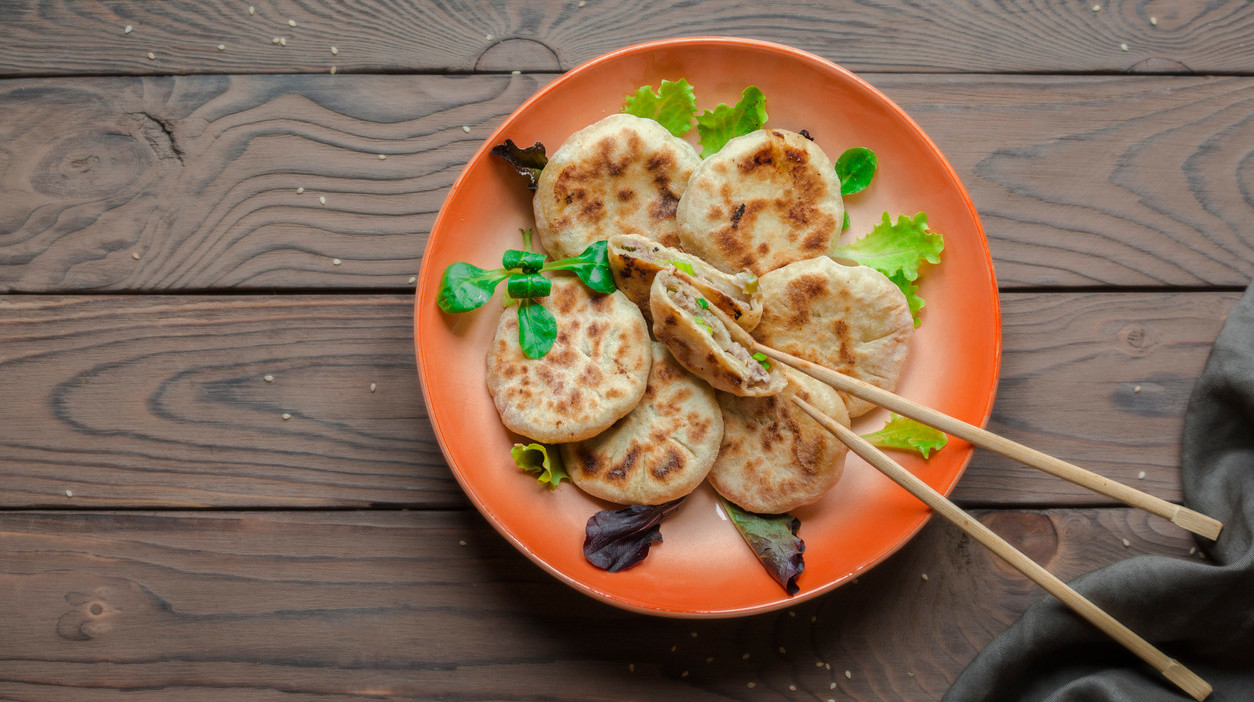Nearly Every Culture Has A Hand Pie—for Good Reason
The first time I discovered hand pies, while visiting Denver last year, I'm not ashamed to say that I set upon the deliciously flaky pastry lads with sheer abandon, consuming more than I care to remember. I spent much of that day, in between alternately shoveling pastry into my gaping maw and brushing crumbs off my dress with my free hand, trying to figure out what the hell these delightful morsels were.
As far as I could tell, hand pies were an entirely separate category of convenient pastry snack, distinct from any I'd come across. In Britain, we have numerous filled pastries, but none named quite so quizzically as hand pies—anyone I mentioned them to upon my return to the U.K. laughed in my face. "You mean pasties, right?" they guffawed, not incorrectly. But did I?
So what is a hand pie? Trusty Wiktionary defines the hand pie as a "semilunar pastry with either a sweet or savory filling, formed by placing a dollop of filling onto a circular piece of biscuit-style dough and then folding it over and crimping it shut. They may be baked, fried or deep-fried. A pasty." As definitions go, at first glance it seems ambiguous. Much of my research has resulted in innumerable recipes, for both sweet and savory variations, though not all are semilunar: I found circular hand pies, square hand pies, or even heart-shaped hand pies. Eat your heart out, Cobain.
As far as I can tell, a hand pie is just a small pastry characterized by a flaky casing (some recipes call for biscuit dough) of any shape (though 'semilunar' seems most traditional in the West), and an edge crimped with a fork. A hand pie is a turnover, essentially, a wide carbohydrate umbrella. All of the following pastries could, to my estimation, be considered hand pies, though purists might disagree.

The Cornish Pasty
A lot of people would be very upset if you were to call a Cornish Pasty a hand pie. That may seem hyperbolic, but the European Commission awarded a Protected Geographical Indication to the beloved "oggy," meaning that only pasties produced in Cornwall or made to the traditional recipe, could be called Cornish pasties.
The pasty itself doesn't originate in Cornwall, southwest England, despite the name. The origins are unclear, but references to pasties exist as far back as the 13th century. They later became a staple of the diet of working people in the county—particularly tin miners—due to their self-contained nature.
Now more commonly enjoyed by tourists than miners, Cornish pasties are nearly hand pies in their semicircular shape and buttery, flaky crust, though the edges are rolled, not crimped. A traditional pasty is filled with beef skirt, potato, rutabaga (and sometimes carrot), and seasoning. It is best enjoyed on a beach or harbor while fending off bastard seagulls.
The Empanada
Not dissimilar to the generic hand pie discussed above, empanadas are South American folded and filled pastries; they are also found in the Philippines. Though the shape remains similar throughout different countries (remember: semilunar), the filling varies geographically, with the most common fillings being fish, chicken and pork—the empanada is almost entirely savory, with fewer instances of sweet filling-based deviance.
Its cousin, the paste, is descended from the O.G., the Cornish Pasty. In the early 1800s, Cornwall's tin mines declined, and many miners were out of work. With few options in England, many crossed to America and settled in Mexico, clustered around the silver mines of Real del Monte. Empanadas themselves descend from Spanish and Portuguese pies (larger, fully lunar-shaped pies cut into slices) with the word empanada stemming from the Spanish word empanar meaning "enbreaded"—the means by which I'd like to die.
My spicy theory, though unsubstantiated, is that the circular pies that fall outside the category of hand pie (though, if we're being honest, isn't all pie hand pie?) were brought to Latin America, where they were influenced by the Cornish, their pasties, and Mexican pastes, and the empanada is their transatlantic lovechild. What a world that would be.
The Patty
Another derivative of the Cornish Pasty is the Jamaican patty. Transported to Jamaica and the Caribbean by British colonizers, the pasty was then flavored with Indian spices such as cumin as well as cayenne pepper from Africa and Scotch Bonnet chilis native to Jamaica. The resulting patty is now arguably more popular than that from which it was born, with patties eaten around the world in any nation where the Jamaican diaspora exists—which is to say, many.
Usually wrapped in slightly softer pastry than pasties and empanadas, the filling is a broad range of chicken, pork, beef, goat, lobster, shrimp, salt fish, vegetable, and ackee, the national fruit of Jamaica, though the most common filling is ground beef.
The Samosa
The samosa is the first on this list to defy the semilunar rule—mostly. Traditional samosas, which come from Central and Southern Asia, are commonly triangular, though they can be found in half-moon, or even conical shapes. Samosas are commonly vegetarian, filled with ingredients such as potatoes, onions, peas, lentils, chilis, and other spices, and are often served with chutneys and other dips. Of course, meat and fish variations do exist, and regional and national differences vary: In the north and west of Pakistan, samosas are mostly meat-based, and in Hyderabad, India, the samosa often has a thicker pastry crust and a minced meat filling.
Fun aside: The friendliest man in South London, Mahmoud, sells incredible sambusak (the Middle Eastern equivalent of samosas) at his falafel and shawarma shop—appropriately named Falafel and Shawarma.
The Spanakopita
"A hand pie with more constituent parts than pastry, vegetable, and meat? Not possible," I hear you cry. Think again. Spanakopita is the Greek pastry breaking the mold established above. Spanakopita varies in size and format: Some are tray-baked, actual pies, though many are more portable, handheld pies. Somewhat related to the Turkish ispanakli (though some forms of ispanakli are little more than flans), the spanakopita dates back some 400 years and is a staple food in the Greek diet.
An extremely flaky phyllo pastry-based snack, the spanakopita is filled with layers of spinach, onion, feta, egg, and spice, though other soft white cheeses can be subbed in. For a zestier bite, squeeze some lemon juice over it and follow it up with its mouthwatering sweet counterpart, baklava.
The Xian Bing
Through researching and writing this family tree of most excellent foods, I've had a thought in the back of my mind: Does a fried wonton count as pie? The fried dough often has a similar consistency to, say, that of a generic hand pie—just a little less flaky. Or, failing that, would a dumpling itself, say a xiao long or char siu bao, count as a hand pie? (I know, I'm off the rails now.) An argument for their inclusion could absolutely be made, and I'd eagerly agree with whatever was put forward. Then, serendipitously, I stumbled across the xian bing.
More similar to a Western hand pie, the xian bing originated in the western Chinese city of Xi'an. Sometimes described as a stuffed pancake, the circular dough is filled with ginger, scallions, and often ground beef, closed in the twisting manner that characterizes Chinese dumplings, then flattened and fried.
The Meat Pie
We've established that any pie can be a hand pie if you're brave enough. The meat pie, hailing from Australia and New Zealand, is, simply, a humble meat-filled pie, self-contained and snack-sized. Though closer to a traditional pie than a patty, this very much is a hand pie. Similar to steak pie (or alarmingly delicious Pukka pies) in the U.K., it's comfortingly mundane: a shortcrust pastry shell filled with beef and gravy. Other variants exist, but, as in life, gravy remains a constant. Ketchup dolloped on top is optional.
The best part of the meat pie is surely its iconic status in its countries of origin. My Australian and New Zealand friends' faces often light up at the very mention of a meat pie, and I've rarely heard them spoken about with anything less than religious adoration.
The British food writer Jay Rayner once wrote that eating with your hands is the best way to consume any food; by using your fingers, you bring the sense of touch into eating. While I'm not entirely sure I agree—looking at you, soup—this logic can certainly be applied to pie. Though any pie is (to further mine this dubious vein of logic) a hand pie, in my somewhat purist opinion, a true hand pie should be semilunar, savory, and snack-sized. But that's just me.


